Coming back from Machu Picchu, I had a bus ticket in my pocket to head to the Bolivian side of Lake Titicaca that night. The lake is 1/2 in Perú and 1/2 in Bolivia, and I was getting too short on time not to overnight myself towards my next destination.
As I was hanging out the window making googley-eyes at the moon, one of the train stewards started up a conversation with me. After ten minutes of chatting, whenever I would submit to pulling my ears back in to hear his questions, he decided to give me a postcard depicting the most famous parts of Perú complete with a note on the back about how beautiful he thought I was. It was very sweet, but I was perplexed by the undeserved attention that is paid to Caucasian women down here. In situations where it becomes radically obvious to me how much people in this part of the world have internalized American/European standards of beauty, I get terribly uncomfortable. I guess it’s the same everywhere, really. Just as men in the U.S. lust after magazine images that they almost never encounter in their day to day lives, men here lust after television images of women that are also part of a fairytale world. I still struggle, though, with huge discomfort, when young women in reception at hotels tell me all the men will love me because my eyes are the color of a movie-star’s, or when the train steward writes me a letter because he thinks I’m pretty, or when men walking by me on the street make comments ranging from, “Thank the heavens for your beauty” to slimy, gross, hissing noises. It feels so wrong to be treated a certain way because of my outward appearance. At least I am lucky enough to be on the positive side of the dichotomy where people are whistling instead of sneering at me for being born with a certain color of skin/hair/eyes. I should remember how lucky I am to feel uncomfortable instead of hated for looking a certain way.
*sigh* and so… back to the Machu Picchu return, I guess.
Because my time in Cuzco before my Bolivian departure was really limited, and I needed to make sure I wasn’t going to end up stranded without a dime, I decided to hop off the train about an hour outside the city and take a local bus back to the center of town. I got dropped off at the Plaza and made my way to the only bank that would accept my card. As I approached I noticed a homeless man who had set up shop right next to the withdrawl centers and got that sinking feeling that always accompanies my interactions with people assailing you for a handout. If I had a choice, I would have come back later, but my bus was set to roll out of the station in just under an hour. I cringed as he stood right behind me watching me enter my pin number and selecting my amount for withdrawl. I thought sadly about how he has probably never even had a bank account, much less $200 to take out and squander on bus tickets, entrance fees, hotel rooms, and food. One of the most challenging parts of travelling for me is dealing with the emotional guilt that surfaces in the moments when my privilege is harshly contrasted with other’s disadvantages I’ve never been forced to face. I snapped my cash and card from the machine and set off taking four foot strides down the sidewalk towards the plaza.
I bought a grocery store dinner (this is a good way to go if you’re in the market of spending as little as possible) and went to check my email before leaving town. Right outside the bus station, I found a few run-down restaurants offering chicken, rice, fries, and soup for three soles. That’s about a dollar out of my pocketbook, so I decided I’d save the yogurt and roasted corn from the grocery store for the bus. A million flies buzzed around the restaurant full of working class folks catching a meal at the end of the day. I crossed my fingers for my digestive system and dug in to my soup, then my main course. It was greasier than I expected, so with time running short on my bus departure, I bagged the remainder up for the dogs begging scraps outside and high-tailed it to the station.
I trudged up and down the departure platform six times scanning for the name of my company on the side of the bus. It was getting dangerously close to departure time, and I was getting the sinking feeling that I had missed a crucial detail somewhere in the process. I finally asked an official-looking man if he knew which stall my bus departed from, and he told me the slip I was holding wasn’t even a ticket, just a voucher. So, I ran back inside to the counter where I had purchased it. The same young woman was there. She had told me the day previous to “regresar aquÔ (return here) at least thirty minutes before it was time to leave. I thought “here” meant the station, and I had complied as far as that went, but “here” actually meant the ticket counter. Apparently the company was just in the business of serving as an intermediary for Peruvian and Bolivian bus companies. She snatched up my voucher and went sprinting to a ticket window down the hall where she bought my ticket for the first leg of my journey with the money I had already paid her. She came back waving a slip of paper with a company name that I HAD spotted on a bus outside, and apologized for the confusion. Already I was wondering what I was going to do when I had to change buses in Puno. The ticket was paid all the way to Copacabana, but I had no idea how I was going to figure out which company had been paid by my company to take me on to the border. I couldn’t get any answer out of her that I could understand, so I just thanked her and dashed out to the waiting bus.
The guy I sat next to wanted to hang his garment bag from the curtain cord of the window, which meant it would hang in my face the whole ride. I was a little annoyed, but decided to focus on the positive. I asked him what was in the bag and he told me it was his work uniform. Turns out he works for Perú Rail, the company that charges tourists an obscene amount of money to ride four hours to Machu Picchu. I told him how the company was swindling tourists, and he was shocked to hear the price difference was that much. He said for a local, the ride up was a little less than $3 dollars. WOW. I asked him what he thought about tourists, since he spent most of his days interacting with them. He said the French and the Italians seem to be the worst as far as tacky, ignorant tourists go. He told me about his separation with his wife, his little girl, and we talked about relationships that go awry because the individuals involved are so young when they get together and realize they want nothing to do with it after they get all their growing-up out of the way. Strange how many times I hear this, “wish I would have” from people in failed relationships. Why does it happen like that so often?
Right before we arrived in Puno, my new friend invited me to the train station to have breakfast with him, if I had time before my next bus departed. I thanked him, but none of the offices were open to confirm the time and company of the next leg of my journey, so I opted to hang around the bus station. I slept on our bus, along with about half the other passengers who were waiting for daylight. I heard rumors of 6:00 a.m. departures for Bolivia, so I set my alarm and got some shut-eye. I awoke to the sun rising over Lake Titicaca, which looked like something you’d see on a Discovery Channel special about a mystic, ancient place. Awesome!
For thirty minutes I wandered around the station asking office attendants, other passengers, vendors, and baggage handlers about my voucher situation. No one seemed to have any answers. I was pretty sure I was going to have to figure out another way to Bolivia. I went back out to the bus where the mechanic was crawling out of his bed inside the luggage compartment. He directed me to PanAmerica, ironically named because it doesn’t serve a single destination on the Pan American highway. They wrote me up a ticket and I found a spot of sunshine on the sidewalk to wait out the arrival of our bus.
Only six of us got on the bus before it departed, all tourists. Then, we stopped somewhere in the middle of town to pick up more passengers (or so I thought). Turns out it’s a despicable waste of fuel to take six people 180 miles in a 56 passenger bus, so suddenly we were crammed into a colectivo with a bunch of other folks headed to the border. I sat smashed in the back seat between the window where the sun was relentlessly scorching my arm and a really swell local guy. The seats were so tight that my knees couldn’t fit in front of me, so my neighbor graciously shared his space. He was full of trivia about the area, telling me about what the different towns were known for as we passed through them and pointing out all the different industries on Lake Titicaca.
The lake itself is absolutely incredible, and indeed the reason I had chosen my particular destination. I was headed to Copacababa, Bolivia, on the shore of the lake and the closest town with boat departures to the Island of the Sun where the Incan Sun God was born. Lake Titicaca is “the world’s highest navigable lake” whatever that means. It’s huge, covering about 5,700 square miles at an elevation of 12,606 ft. The color of the water, though, is what draws people from miles around and keeps even the locals, who see it everyday, in awe of its beauty. The water is the most piercing color of blue that simply can’t be captured in photos. I got my first glimpse at sunrise in the Puno bus station, but I first glanced the striking blue color from the colectivo window later that morning. Amazing!
We arrived in Copacabana early afternoon, and I befriended another solo female traveller… Caroline from Wales. She was really sweet, and had just been ditched by her travelling companion who had no interest in seeing Bolivia, was meeting up with a lady-friend in Peru, and knew the Spanish she had been counting on travelling with. We found a hostel for dirt-cheap, and I took the ever-coveted shower. Once again, electric, and “agua caliente” was definitely agua chilly. BRRRR. Not to mention that the faucet handles were located OUTSIDE the bathroom in the courtyard. Where`s the logic there? When I was done, I just had to let the water run until I had dried off and dressed. A nap was immediately to follow, as I had seen far too many days with far too little sleep.
After I woke up, we set out to explore the town and get some vegetables to go with the pasta dinner we had agreed upon cooking that night. People are definitely less friendly here, half the time ignoring greetings completely. Is this a change in culture? Numbness due to too much tourism? A result of the political climate? Whatever it is, I don`t like it. It`s a bummer to feel unwelcome. Anyway, both of us were hoping for a little computer time, and we found the only internet place in town. Turns out they charge two arms and half a leg per hour, so we spent a few precious moments checking email before heading back to the hostel. And actually, the guy running the place ended up making me a deal. I had a bunch of coins in my pockets that would only pay half the fee, but he was in need of “monedas,” so he just took all the change I had and called it good. Awesome!
On the way home, I swung by one of many bus agencies to inquire about a ticket on to La Paz for the following day (or maybe the next). Turns out the Bolivian protests I had heard about had also shut down the roads, and no tickets were being sold at the time. I shrugged in response and acquiesced knowing I would have to wait at least another day to find out what fate had in store for me. I checked at one other agency, where the ticket seller warned me that Copacabana (in the event that I needed to back-track through Perù) might be shut-down by road blocks the following day as well, but I wasn`t about to give up going to the Island of the Sun on a hunch! Bolivians everywhere are protesting because the corrupt government had sold the locals’ mineral rights right out from underneath them to transnational corporations (mostly from the U.S.). Locals are now demanding that the exploitation ceases and that national resources be nationalized. Doesn`t sound like I`ll be getting through Bolivia any time soon!
Caroline and I had decided we were going to climb the local hill for sunset, so we set out with an hour or so to spare. Thinking she knew the way, I trudged along beside her until we stopped abruptly in front of the entrance to the army base. “I wonder if the path was back there?” she says. A smile crossed my face and I started to laugh as I realized I had it all wrong. I chatted with the gate guard, and he directed us up a path so steep I knew I was just going to have to roll back down. The trail kept right along a fence with all sorts of threatening signs posted by the military. I was almost afraid to even use it as a handrail for fear of being shot by some trigger-happy young soldier. Silly, I know. We made the top in less than 20 minutes, and sat chatting as the sun sunk lower in the sky. We had so much in common! It was great! We talked forever about cultural problems, relationships, school, jobs and life`s big questions. Huge hummingbirds zoomed around us to get at the purple lupine until finally the sun touched the lake and slowly immersed itself. We used the last of the day`s light in the rapidly cooling evening to get back down the hill and to the kitchen to put together our pasta dinner.
Making dinner in a bare-bones kitchen was a fun challenge. The gas stove (two burners only) was hooked up to a propane bottle mounted underneath the counter, and the knobs didn`t have any markings. We thought for sure we were going to blow ourselves up, but we managed to get some water on to boil. Next, we tackled the cans of tomato paste. It didn`t matter how much hacking we did with Caroline`s Swiss Army knife, the lid wasn`t going to budge. Finally, the manager of the hostel happened by and helped us with his personal can opener. Alleluia! Twenty minutes later, the sauce was bubbling, complete with chopped tomatoes and fried onions, but the water still hadn`t boiled. Funny, especially, I thought, because we were at such a high altitude. Isn`t water supposed to boil sooner? We waited it out and finally got the vigorous boil we`d been anticipating. Dinner wasn`t quite delectable, but it wasn`t all bad, either, and certainly cheaper than eating out!
After we finished the dishes, it was only 8:30, but with the freezing temperatures of the high-elevation night rapidly descending, our beds sounded most appealing. On the way, we talked about media services and how Clear Channel keeps American television biased. Our early lights-out brought the sleep I had been missing for the past week! We had agreed on getting up early enough to be at the docks at seven to miss the tourist crowds, as suggested by the guide book. Imagine our disappointment when, at 7:30, a guy at the docks told us we had no choice but to go on the tourist boats the left at 8:30. Slightly disheartened, Caroline suggested we search out some early-morning hot chocolate while we waited. I didn`t get a single “buenos dias” in response to my greetings anywhere we went. I really hope it`s the climate provoked by the protests, because otherwise, Bolvians are REALLY unfriendly. At least in Copacabana, that is. It seemed that the locals were taking the political problems more seriously than anything I`ve ever seen in the U.S. Even the captains of our boat had a small radio that they hovered around catching every little piece of news they could.
We went back down to the docks after our warm drinks and boarded the top level (exposed!) of the tourist boat. The view on the two hour long cruise to the island was amazing, even though my toes felt like they were going to freeze off the whole time. The mountains on the north side of the lake are magnificent… giant grey/blue/purple peaks capped in silvery white snow fields. Gorgeous! Since the lake was at 14,000 ft. I could barely fathom the probable height of the snow-capped peaks looming across the water.
Caroline and I thought we had escaped the awful “herded animal” feeling you get from being in a tourist group, but the locals have it set up so that, group or not, you still get herded around. As a result, when our boat landed, we were directed to an office where we were supposed to pay to see the islands ruins and museum. We weren`t all that interested in either, being as we had both seen plenty of ruins and were tired of museums. We said we had to go to the bathroom, and just followed the herds of folks who had already paid. The first stretch of trail wound up around a cliff where we could see the entire bay in all it`s green/blue glory. The water looked just like it does in all those postcards and movies about tropical paradise. It`s so clear that you can see deep into the water as the emerald green slowly fades to a sapphire that continues across the entire lake. Sandstone of all different colors, red, white, purple, brown, orange, tan, yellow was the dominate characteristic along the trail leading from one end of the island to the other. Beautiful!
As I suspected, within five minutes of hiking, we came to a junction where a local was waiting to check our tickets that we were supposed to purchase at the museum. Also as I suspected, if you didn`t want to see the ruins, you didn`t need a ticket, counter to what had been implied back at the bay. We seized the opportunity to break away from the other tourists and set off up the hill toward the south end of the island leaving all the chattering voices behind us. We hiked in silence for the better part of an hour before stopping to snack and converse. We saw a group of brits crest a hill in the distance, which immediately inspired us to press onward. We came to an archway made of wood, a surprise because it`s a resource that`s rather scarce on the island. Due to the temperatures, the growing season supports little more than sagebrush-like plants on the majority of the island. A man waiting at the arch asked to see our tickets from the north side of the island. Two different tribes live on the Isla del Sol, each claiming ownership to half the island, which means tourist have to pay two different groups of people to get from one side to the other. This guy wanted double what the last group had asked, and they didn`t have a museum OR ruins! I`m not complaining about having to pay, but the price they were asking to walk half a mile down to the shore was as much as a one-way boat ride out to the island! Jeez! Having no choice, reluctantly paid the fee before getting lost in the relatively small village. Finally, having asked one little girl, and one woman for directions, we found ourselves standing among a small collection of pigs and goats on a terrace. A group of women, generations deep, happened along and pointed us down the least obvious path. We finally arrived at the port with 45 minutes to spare, and spent the rest of our time sunning ourselves on the boardwalk. The air was cold, but the sun was hot and felt great on my bare arms.
The boat ride back (we opted for the lower, sheltered deck this time) seemed to take forever. Caroline and I had agreed to eat dinner out and try the local fare, so I practically drooled with hunger and the shore teased us relentlessly. My game plan was to eat dinner, then take a colectivo to the border, cross, and hopefully arrive in Puno in time to get a bus to the Perù/Chile border. I`ve given up on getting through Bolivia. I think I`ll waste more time waiting. I might as well just go around and maybe at least still have a chance to see some new things.
We went directly to a recommended restaurant when we finally landed. After looking over the menu and finding that they served my beloved pesto pasta, my resolve to try something local quickly melted. How could I pass up pesto pasta!? When our plates arrived at the table, I regretted my boring decision, but c`est la vie! As we took our seats on the patio, I noticed a man at the table next to us with his nose in a book. Having been there plenty of times before, I confirmed that he was eating alone and invited him to join us. He gladly accepted and proceeded to fill our ears with plenty of stories. Andy, from Australia, an “attitude consultant” or some such nonsense. He was entertaining, though!
As we watched the sun set during dinner, I changed my mind about making the border that night. I could just see myself, the only gringo for miles, getting stopped at some protest-road block with nowhere to go and no one who cared in the least that I have a flight to catch in Buenos Aires in a week and a half (probably fueled by Bolivian resources made dirt cheap by the corrupt government benefiting me and the corporations, but not Bolivians… who knows?). A colectivo driver, looking to be about 15, warned me that protests were probably going to start that night and encouraged me to get to the border pronto, but he wanted to charge me 8x`s the usual fare. I decided to hedge my bets and keep my fingers crossed for the morning. If worse comes to worst, the border is only 15 kilometers. I`ll just walk!
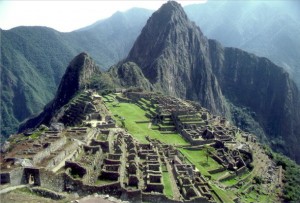
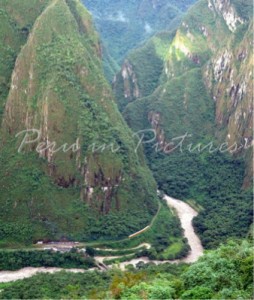
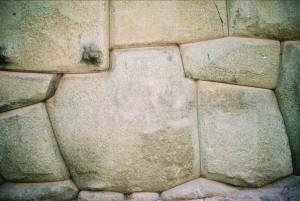
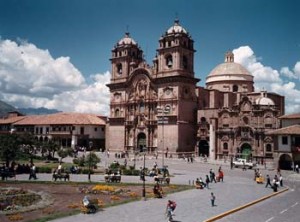
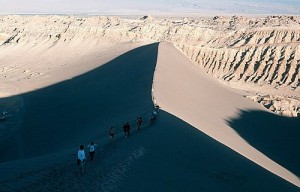
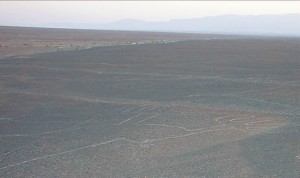
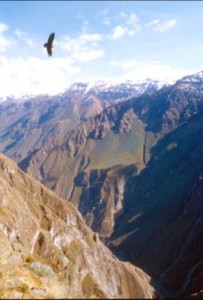
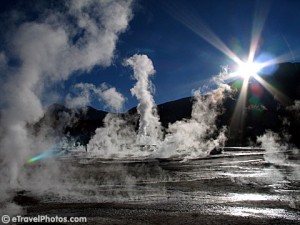
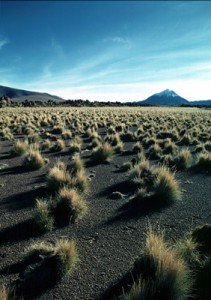
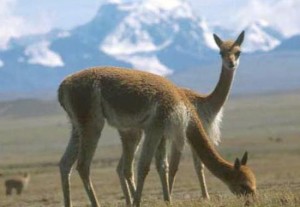




Twitter Facebook Google+ StumbleUpon Reddit Pinterest